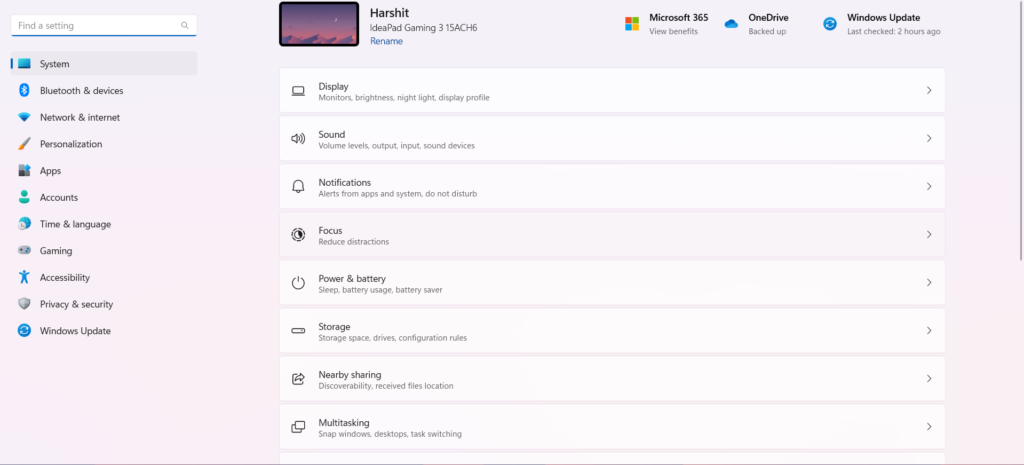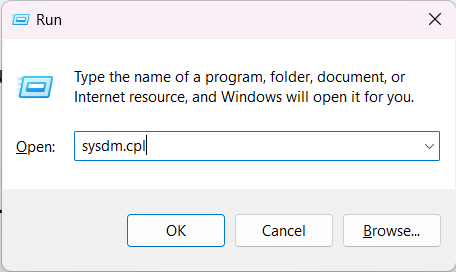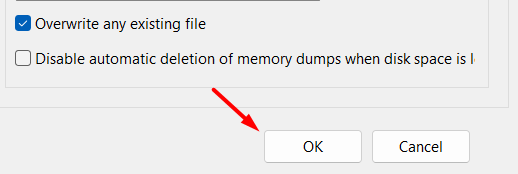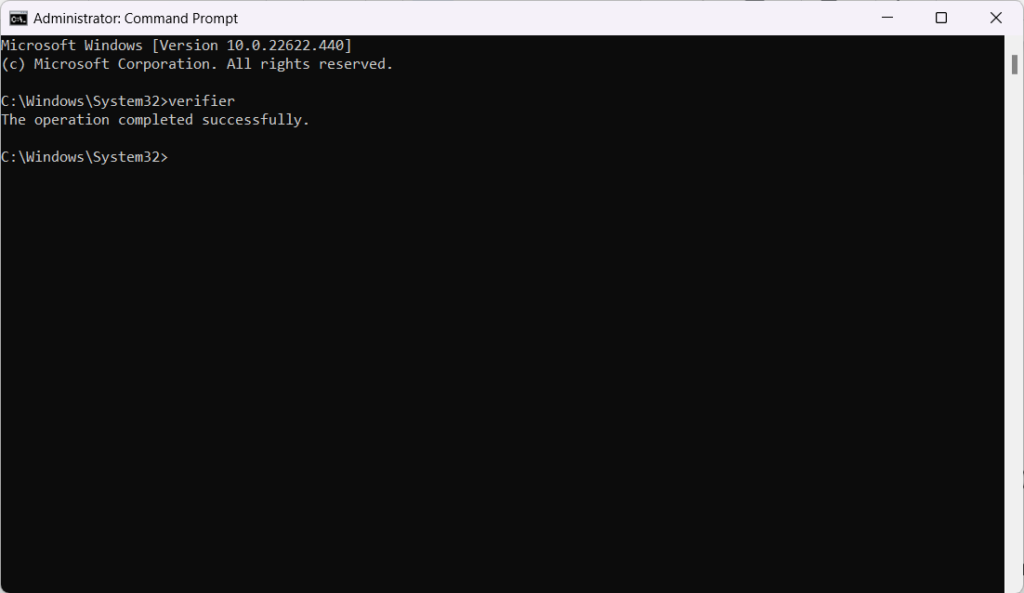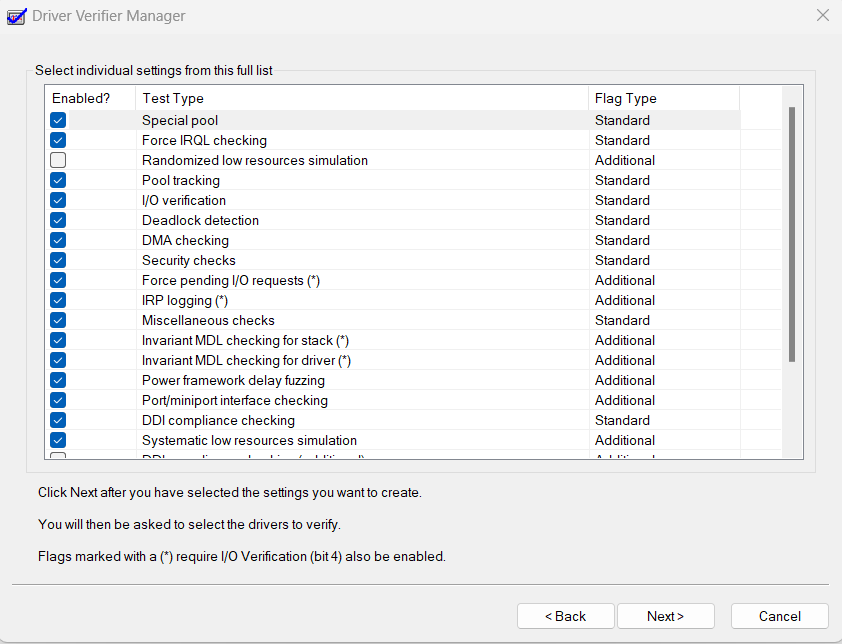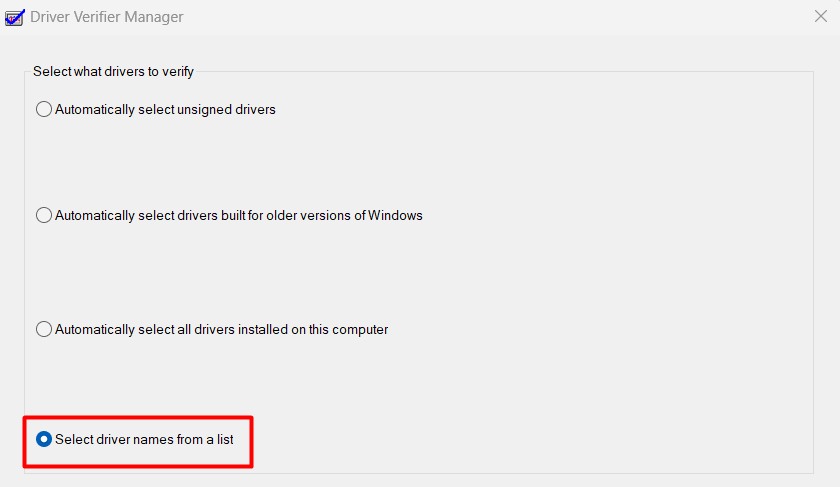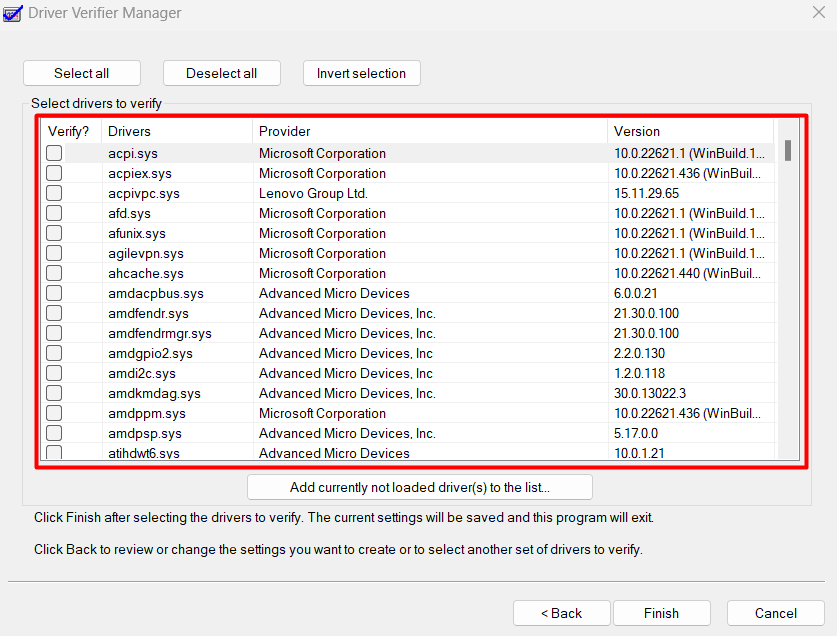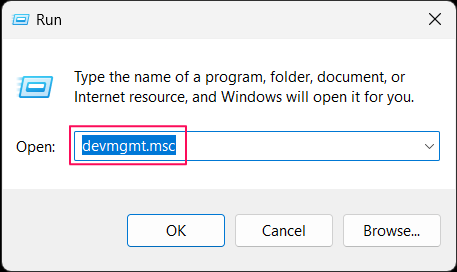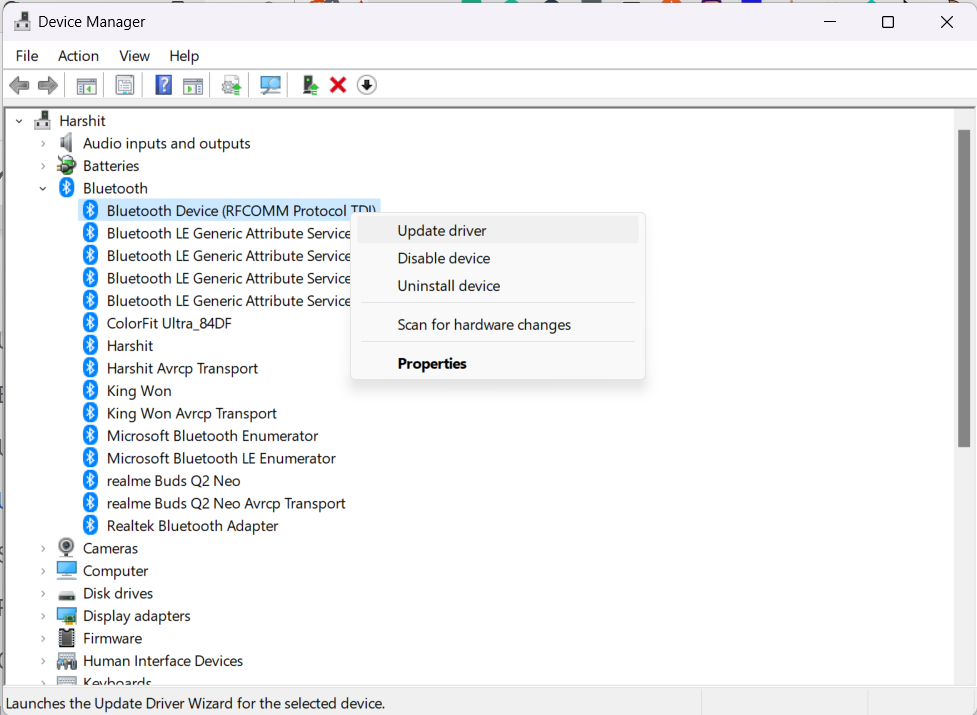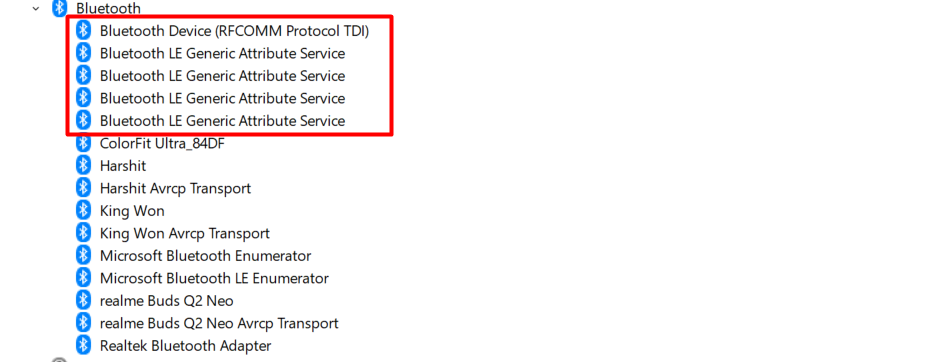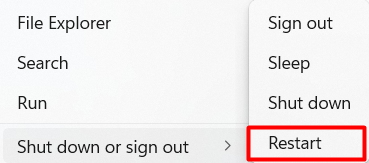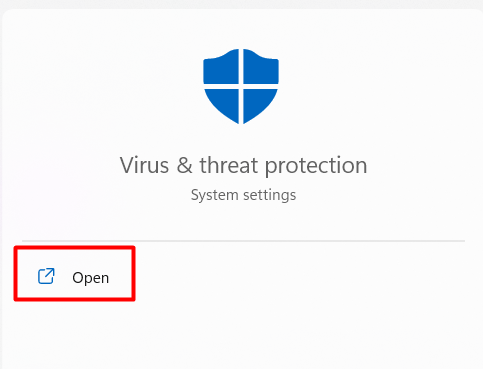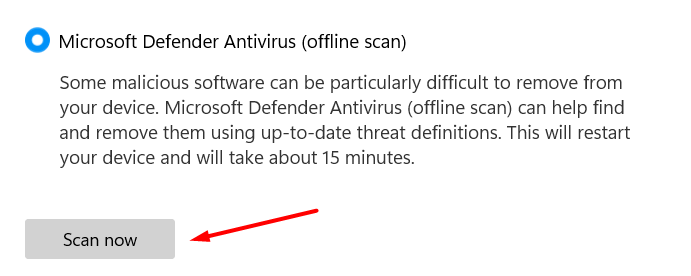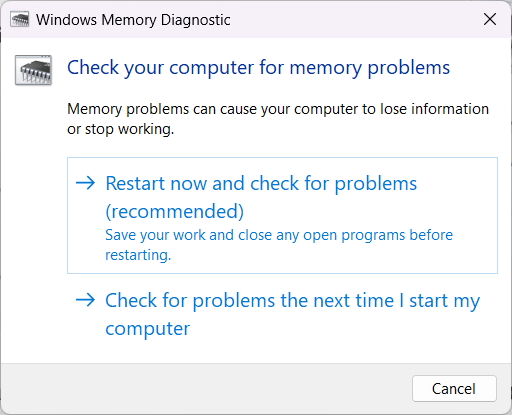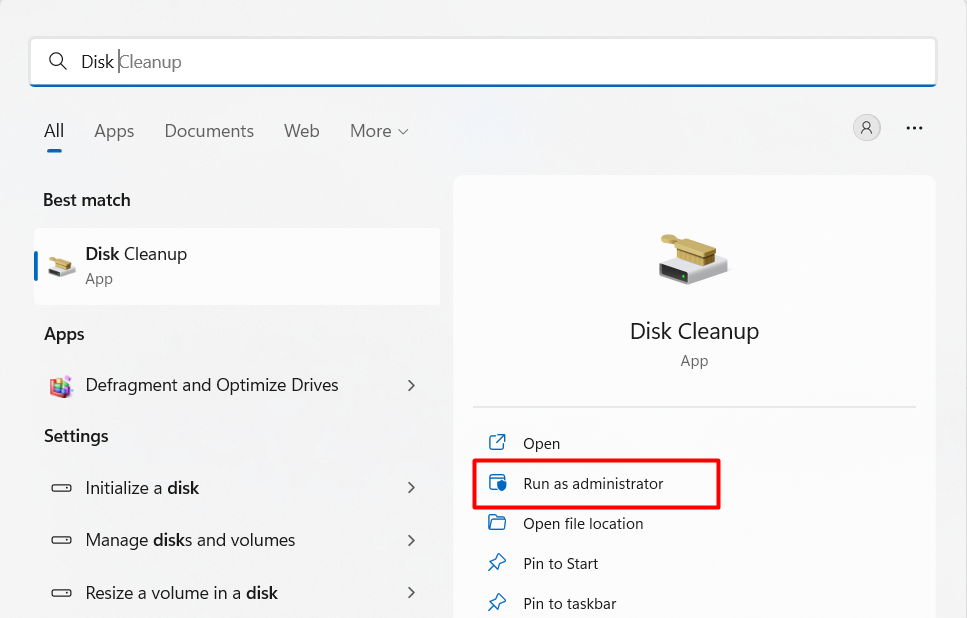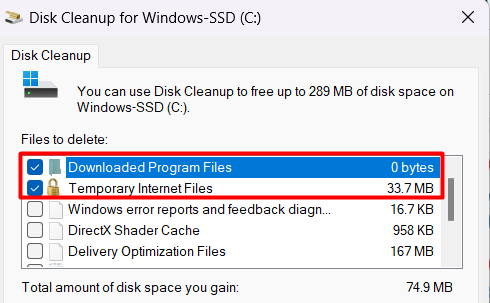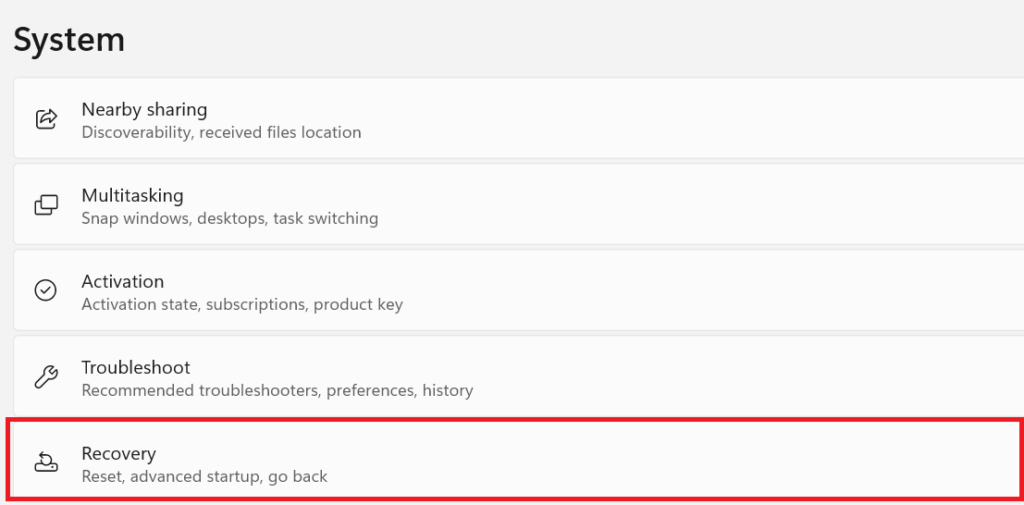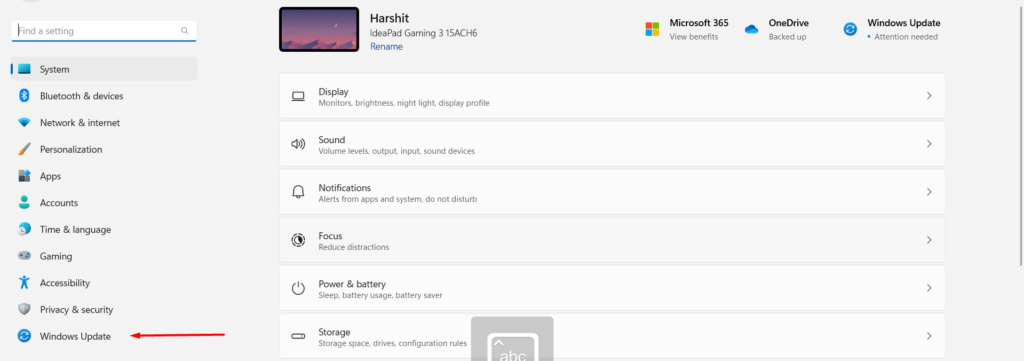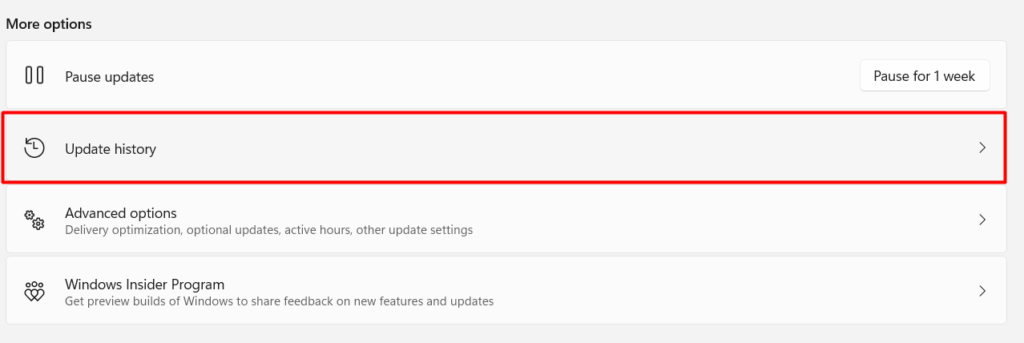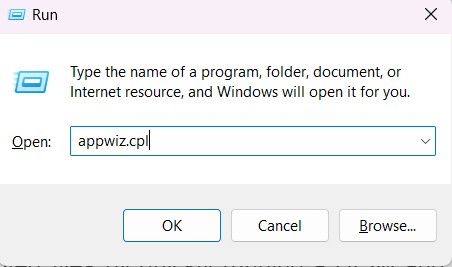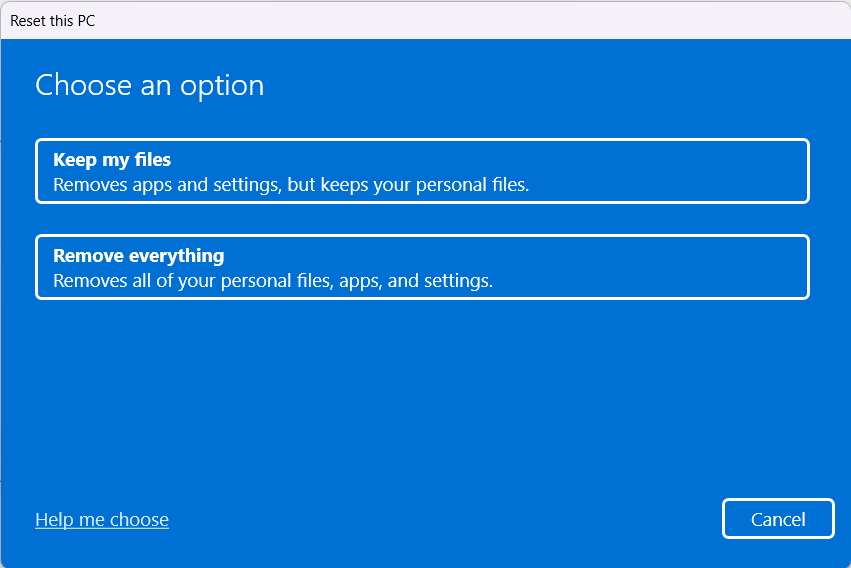Recently, one of our team members was also repeatedly experiencing the same problem. After attempting different troubleshooting methods, they fixed this error from the roots. To check those tried and tested solutions, read this article and you should be able to resolve the WDF_VIOLATION error in your Windows 11/10 PC.
What Causes WDF_VIOLATION Error in Windows 11/10?
Here are some sources that are likely to cause the BSOD WDF_Violation error.
Faulty Hardware Corrupted System Files Inaccurate BIOS Settings Outdated Drivers Less RAM Fault In Bluetooth Drivers Issues With USB Ports Third-Party Software Malware or Virus
Fix WDF_VIOLATION Error in Windows 11/10
Here in this section, we have mentioned over twelve most working solutions to help you login back into your system without interruption.
1. Rename Faulty HP Keyboard Driver
Many HP laptop users reported that a driver named, HpqKbFiltr.sys developed this issue on their machines. They also added that this particular driver was installed on their HP laptop through Windows Cumulative Update. Hence, this could be the same in your case if you are using an HP laptop. One of the ways to fix this issue is renaming the driver. You can follow along to rename the driver.
- Open the Settings app by pressing Win + I.
- Search for the Recovery section and click on it.
- Click on Restart now to get access to advanced startup options.
- You will now see various options on the Choose an option window. Click on Troubleshoot from the given options.
- Now, click on Advanced options in the Troubleshoot menu.
- Click on Command Prompt once you enter the Advanced options window.
- Execute the below-mentioned commands in CMD to rename HpqKbFiltr.sys keyboard driver.
- Reboot the PC after executing the mentioned command. Your PC should now start properly without the BSOD WDF_VIOLATION error.
2. Remove the Faulty HP Keyboard Driver
If renaming the HpqKbFiltr.sys driver doesn’t solve the problem, you can now try removing the HP keyboard driver. Don’t fret. Removing a malfunctioned driver doesn’t affect your system’s performance. Your system will automatically install the missing driver when needed. We have explained the process of removing the HpqKbFiltr.sys driver in the below-mentioned steps. Note: Before implementing the below-mentioned steps, ensure that your PC is booted into Safe Mode. If not, you can check above steps to do so.
- Boot your PC into Safe Mode and open Command Prompt.
- Execute the mentioned command in CMD. For 32-bit System: For 64-bit System:
- That’s it. The faulty keyboard driver must be removed now. Reboot your PC normally and check the status of the issue.
3. Try Disconnecting USB Peripherals
Faults in your system’s hardware could also lead to issues like this. We are referring Hardware to USB Peripherals attached to the PC. Many Windows 11/10 users encountered the error because of faulty USB peripherals or USB ports. We suggest disconnecting all the USB peripherals one by one and rebooting the PC simultaneously. If the error gets fixed after disconnecting a specific USB device, we recommend replacing that particular accessory with a new one to avoid the same problem in the future.
4. Use Windows Driver Verifier Tool
One of the reasons for the WDF_VIOLATION error is an issue with the Framework-Based Drivers. But, there isn’t a straightforward method to detect the malfunctioned driver. You must first enable Minidumps and use the Driver Verifier Tool to continuously monitor all Kernel-Mode Drivers and Graphics Drivers. Follow the mentioned steps to use the Driver Verifier Tool to find out the culprit of the issue.
- Press Win + R to open the Run program and type sysdm.cpl.
- Head to Advanced > Startup & Recovery > Settings.
- Uncheck the Automatically Restart option.
- Select the Small memory dump (256 KB) option from the drop-down list under the Write debugging information section.
- Make sure to set the Small dump directory to %SystemRoot%\Minidump.
- Click on OK to save the changes and reboot the PC.
- Run Command Prompt as administrator.
- Type verifier in CMD and press Enter.
- You will now see the Driver Verifier Manager window. Choose the Create custom settings (for code developers) option.
- Check all the present in-the-box options, except Randomized low resources simulation and DDI compliance checking.
- Click on the Select driver names from a list option.
- Once done, select all the drivers that aren’t related to Microsoft Corporation. You can identify this by checking the Provider’s name.
- Lastly, click on the Finish button to save the changes. That’s it. Now, wait for the next crash and the system to automatically create a DMP file. You can simply read the DMP file using the BlueScreenView tool.
5. Update Bluetooth Drivers
Some Windows 11/10 users used the method mentioned above to create a DMP file. A few users reported that their DMP file declared Bluetooth drivers as the culprit of the issue. Fortunately, updating the Bluetooth drivers fixed the problem for them, and you can try the same. Follow the below-mentioned steps to update Bluetooth drivers from the Device Manager.
- Press Win + R and type diskmgmt.msc in the search box.
- Click on Bluetooth to get a list of all Bluetooth drivers.
- Right-click on the Bluetooth driver and click on the Update driver.
- Follow the same steps with other Bluetooth drivers.
- In the end, reboot the PC to see if the PC restarts normally or is still facing the same issue.
6. Scan For Viruses
It could be possible that your system has some infected files and applications that created this issue. We suggest running a Quick and later Detailed Scan to ensure everything on your system is safe. For this, You can use Windows’s Microsoft Defender Antivirus tool.
- Press the Windows key.
- Type Virus & threat protection and open it.
- Click on the Quick scan.
- Wait until the scan completes and see the results. If the scanner finds something infected, you can cross-check it and remove it.
- Click on the Scan options.
- Select the Microsoft Defender Antivirus (offline scan) option.
- Click on the Scan now to run a detailed scan.
7. Run Windows Memory Diagnostic
BSOD error appears for many reasons, and one of the most common causes is defective hard drives. It could be possible that there are some issues with your hard drive. You can use the Memory Diagnostic tool to ensure your hard drives are in the perfect and working state. This tool will help you find and fix all problems related to the applications and memory with ease. You can follow the mentioned steps to use the Memory Diagnostic.
- Press the Windows key and type Memory Diagnostic in the Search Box.
- Click on Windows Memory Diagnostic.
- Select Restart now and check for problems.
- Your system will now reboot, and the tool will automatically start scanning for issues.
8. Use Disk Cleanup Tool
There is a possibility that the system isn’t getting ample storage to execute essential tasks, resulting in this issue. If this is the case, it can be easily fixed by freeing up some storage. Windows has an integrated Disk Cleanup tool that lets you clean unnecessary files in a few steps. Follow along to free up some space using the Disk Cleanup tool.
- Press the Windows key and search Disk Cleanup.
- Click on the Disk Cleanup.
- Select Downloaded Program Files, Temporary Internet Files, Thumbnails, and Temporary Files.
- And finally, click on Clean up system files.
9. Uninstall Recent Updates
Several Windows 11/10 users reported that they started facing this issue after installing a Windows Cumulative Update. If you also started this error after the new update, then the culprit of the entire issue is in front of you. You can instantly fix the issue by uninstalling the update. You can follow along to do so. Note: It is necessary to enter into Boot Mode before uninstalling recent updates. We recommend doing this to be on the safer side.
- Open the Settings App and move to the Recovery settings.
- Click on the Restart now button.
- On the Choose an option window, click on Troubleshoot.
- Then, click on Advanced options and head to Startup Settings.
- Press F5 to enter into Safe Mode with the Internet.
- Your PC will now restart only with essential drivers and applications. Press the Windows key and search Windows Update Settings.
- Head to the Update history section in the Windows Update settings.
- Scroll down and click on Uninstall Updates.
- Click on Uninstall next to the recently installed Windows update.
10. Uninstall Recently Installed Applications
If you are getting WDF_VIOLATION issue after installing a new application, then uninstalling that recently installed app would be an ideal solution. We have explained the same in the below-mentioned steps.
- Press Win + R, type appwiz.cpl, and hit Enter.
- Try to remember the recently installed application/s and find them in the list of given applications.
- Once found, right-click on the app and select Uninstall.
11. Run DISM, SFC Scan
In case the issue doesn’t fix after trying all the major solutions, then corrupted system files are expected to be the reason behind the issue. You can quickly find all the corrupted files by running a DISM and SFC scan. Follow the below-mentioned steps to do the same.
Run DISM Scan To Check for Files Integrity
- Open CMD or Terminal as administrator.
- Execute the mentioned command and press the Enter key: DISM.exe /Online /Cleanup-image /Restorehealth
- Once the scan completes, restart the PC.
Quick SFC Scan To Fix Corrupted Files
- Execute the mentioned command: SFC /scannow
- Press the Enter key.
- Restart the PC
12. CHKDSK Repair Command
Besides, we also suggest running the CHKDSK repair command to fix all errors related to your hard drive.
- Run Command Prompt as administrator.
- Copy and paste the mentioned command in the CMD and press Enter key: chkdsk /f C:
- Restart the PC.
- Open Event Viewer after the PC restarts.
- Expand the Windows Logs section and click on Application.
- Search for Wininit and double click on it to open Event Properties windows.
- On the Event Properties windows, you will see the errors found during the scan.
13. Reset BIOS Settings To Default
Putting BIOS settings to default could also fix the WDF_VIOLATION issue. However, not many users tried and suggested it. But, we found it useful because resetting the BIOS setting will make everything fresh. Hence, there are chances that this issue might disappear after doing this. Below are the steps to reset the BIOS settings in Windows 11.
- Press Win + I to open the Settings window.
- Open the Recovery section and click on the Restart now button under the Recovery options.
- You will now be entered into the boot settings. Click on Troubleshoot on the Choose an option screen.
- Select Advanced Options and then choose UEFI Firmware Settings.
- Click on Restart to open the BIOS mode settings.
- Press F9 to open Setup Defaults.
- Lastly, select Yes using the keyboard arrow keys.
14. Reset the PC
If none of those mentioned above solutions works, the last option is to reset the PC and get everything back to the default state. We have mentioned the entire process of resetting the Windows 11/10 PC below.
- Open the Settings app.
- Head to the Recovery settings.
- Click on Reset PC.
- Select the Keep my files option.
- Your system will now return to the default state.
How Do I Permanently Fix Blue Screen on Windows 10?
There are several ways to fix the blue screen error on Windows 10. One of the best ways is by uninstalling the recently installed Windows updates. You can also try using the Windows Driver Verifier tool to find the main culprit and rectify it accordingly.
How Do I Fix Blue Screen in Safe Mode?
You need to first open your system Settings app by pressing Win + I. Afterwards, head to the Recovery options and select Restart to open BIOS settings. First, click on Troubleshoot and then select Advanced options. Now, click on Command Prompt on the Advanced options screen. You can now try uninstalling recently installed third-party applications, recent updates, and Bluetooth drivers.
Can Not Fix Blue Screen of Death?
Blue Screen of Death mainly emerges due to hardware issues. Your PC might be having some hardware issues. In this situation, you can try hardware troubleshooting methods, such as fixing hard driver errors, clearing RAM sticks, etc.
Can RAM Cause Blue Screen?
Sometimes flaws in the RAM also lead to BSOD error. You can fix this error by trying different hardware and software troubleshooting methods.
Does BSOD Damage Your Computer?
Blue Screen of Death (BSOD) doesn’t damage your computer. It doesn’t affect your system files, applications, and anything else.
Final Words
You are working or playing, and everything suddenly stops due to a system crash. It ends up with a blue screen with an error code, WDF_VIOLATION. Getting this error could be frustrating and ruin your entire mood and day. We suggest trying the above-mentioned solutions to fix the WDF_VIOLATION Error in Windows 11/10.
